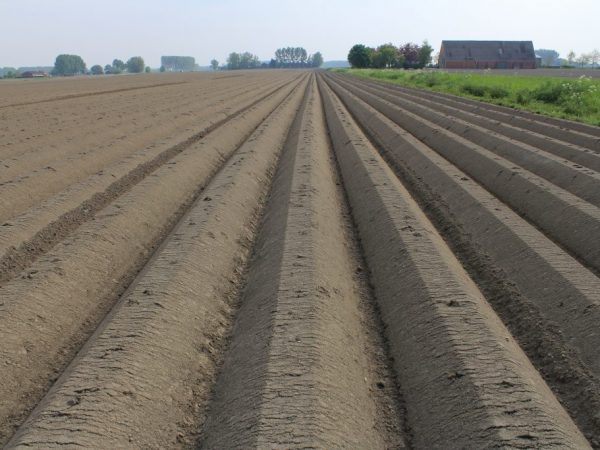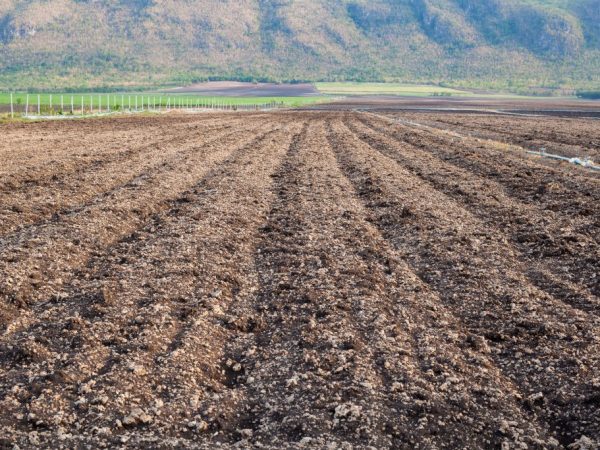Rules for preparing soil for potatoes
In order to get a plentiful and excellent in its taste potato crop, it is not enough just to plant it in the ground. It is necessary to carry out a number of agrotechnical measures in advance that will help create ideal conditions for growing this vegetable in the garden or dacha. Preparation of the soil for potatoes is especially important.

Rules for preparing soil for potatoes
Soil preparation
Professional agronomists believe that the process of soil preparation should begin in the fall - immediately after harvest. Close attention should be paid to this issue in the spring, immediately before the start of the sowing campaign. It is especially important in autumn and spring to organize the digging of the soil. This will enrich it with oxygen, allow it to get rid of rhizomes and weed seeds, and help prepare the earth for the process of planting root crops. Soil features
Before planting this vegetable, it is necessary to take into account several important points related, first of all, to the choice of a place for placing the beds with potatoes, the peculiarities of the soil composition, fertilization and loosening of the earth. Preparing the soil for planting potatoes is not a difficult process, but quite laborious. In order to do everything right, you will need professional advice.
- Choosing a landing site. Keep in mind that potatoes are a light-requiring vegetable. Therefore, for growing root crops, it is necessary to choose a well-lit area of the garden. By planting fruits in the shade, you will make a big mistake, since the plant will not be able to receive the substances it needs, it will turn yellow and wither, and bloom badly. As a result, you will get a very small and low-quality crop. In the process of sowing, it is necessary to adhere to a certain pattern, planting sprouted fruits or seeds from the northwest to the southeast. This placement will allow you to maintain uniform illumination in the garden area.
- Soil type. A slightly acidic soil is most suitable for this vegetable. According to the recommendation of experts, it is best to use black soil for growing potatoes. The fruits grown on this soil are distinguished by their excellent taste and beautiful presentation. Clay or sandy soil can be used only after measures have been taken to fertilize it. Plants and dense types of soil are not suitable for growing, since in order to develop normally, root crops need a sufficient amount of oxygen. It is necessary to take into account such a factor as soil moisture. Remember, excessive moisture can cause the plant to develop various diseases and rot.
- Plowing. This procedure will help create a loose and oxygenated soil that will only benefit the plant. During this process, as a rule, many parasitic plants are destroyed, which do not allow root crops to develop normally and gain strength. Keep in mind that both autumn and spring plowing is equally important.
- Siderata.This is the name of the plants that are planted before sowing the main vegetable, and enrich the land with various useful microelements. For potatoes, the most beneficial predecessors are cereals and legumes. You can also use cabbage, cucumbers and onions as siderates. They will help to improve the health of the land allocated for growing root crops, garlic and marigolds. Do not forget that this plant is not recommended to be planted in the same place for several years in a row. You should not plant root crops where peppers, tomatoes and blue ones grew before. If you simply do not have other areas in your garden suitable for growing potatoes, use fertilizers before planting them.
Processing process
Preparing the soil for planting potatoes includes various processes for its processing. This is necessary in order to create the most favorable conditions for the ripening and development of fruits. The procedure for carrying out pre-cultivation of land, as a rule, consists of such important measures as:
- loosening;
- leveling earth seals;
- enrichment of the earth with oxygen;
- fertilization of the garden;
- elimination of weeds;
- leveling the level of the ground cover;
- creation of optimal conditions for mechanical harvesting.
Preparing the soil for planting potatoes differs in the types of work, depending on what time of the year it is in the yard. Keep in mind that completely different events need to be held in the fall and spring.
Autumn processing

You need to start preparing the soil in the fall.
The preparatory work carried out in the fall is very important. If you are going to grow this vegetable yourself and want to reap a good harvest, pay special attention to them. During this period, soil cultivation includes digging, removing the remaining weeds and fertilizing with useful substances. It is best to use ordinary cow humus for these purposes with the addition of supersulfates.
If you do not want to dig up the garden in the fall, you can plant green manure plants on it, which in the spring, before the start of the sowing campaign, will need to be removed. Such a procedure will significantly enrich the soil with useful microelements, without resorting to the help of fertilizers.
In the event that the area of the garden in which you plan to plant potatoes in the future was very much clogged with weeds, be sure to peel the soil in the fall so that the seeds hidden deep in the ground germinate and the parasitic plants are removed before sowing root crops. This time is ideal for leveling out the level of the ground cover, and then in the spring the soil in these areas will not be flooded with rainwater.
Spring processing
In spring, soil preparation for potatoes should be started only after the frost subsides and it warms up to 10 ° C heat. You can do deep loosening using a pitchfork and a rake, or simply digging up the ground.
The first method will help preserve the moisture content of the soil, and the second will easily remove weeds that have emerged after winter. Take time to smooth out large clumps of earth. Smooth them out with a rake if necessary.
Fertilization with useful substances
This issue should be given special attention. Take the time to provide the land with useful fertilizers. This must be done both in autumn and spring. If the soil is not fertilized, after several years of planting potatoes in the same place, the soil becomes depleted and becomes unusable.
Clay, sandy and peaty soil needs additional recharge. The most suitable and affordable are such mineral additives as peat, humus, compost, sawdust. Such microelements as phosphorus, potassium and calcium will also be useful.Do not forget that you should not use fresh manure to fertilize the soil for potatoes, because because of this, the fruits may lose their pleasant taste and become too watery. It is better to use humus for these purposes.
Another available fertilizer for any gardener is ordinary ash. Using it, you enrich the earth with nutrients that will help you grow an excellent harvest. Please note that this fertilizer must be used at the rate of 5 to 10 kg per 100 m2 of land.
Conclusion
Fertilizers purchased in specialty stores or on the market must be used in accordance with the rules indicated by the manufacturer on the label. To get the maximum positive effect, it is best to use them during spring plowing.
All the above tips for preparing land plots for planting potatoes will definitely help you grow and harvest a good and, most importantly, tasty harvest.


